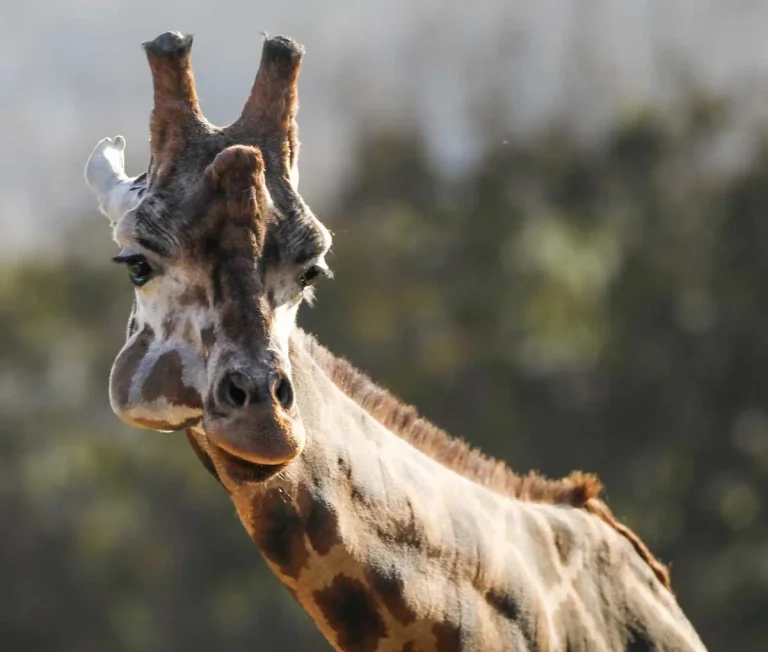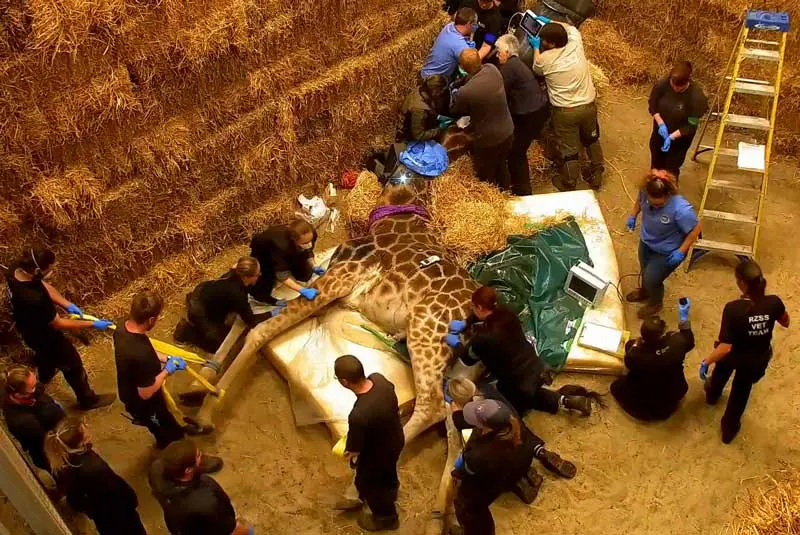29 Oct 2025
The team celebrated a successful outcome as the process and Gilbert’s recovery went smoothly.

What a cheek! Gilbert the giraffe was anaesthetised and examined at Edinburgh Zoo.
Vets have hailed the “massive team effort” required to successfully anaesthetise and examine a giraffe at Edinburgh Zoo.
Coordinated by the Royal Zoological Society of Scotland, an expert international team of more than 20 vets, vet nurses and zookeepers worked together to examine Gilbert, an eight-year-old giraffe with significant facial swelling.
The team included Edinburgh Zoo’s veterinary team, experts from Chester Zoo and Copenhagen Zoo, and specialists in anaesthesia, equine dentistry and surgery from the Royal (Dick) School of Veterinary Studies’ Hospital for Small Animals and Dick Vet Equine Hospital.
Anaesthetising giraffes is said to be “notoriously high-risk” as their unique anatomy and physiology makes them vulnerable to drops in blood pressure and makes managing their airways a challenge.
Complications arising from prolonged recumbency can include compromised ventilation and blood flow to limbs, contributing to myopathy, neuropathy and capture myopathy.
It is said both induction and recovery can be hazardous due to the risk of catastrophic trauma caused by falls or struggling.

Dick Vets’ Hospital for Small Animals’ RCVS specialist in veterinary anaesthesia Rob Ward provided support and monitoring alongside resident in anaesthesia and analgesia Dóri Szabó.
Dr Ward said: “I’m proud to have been part of a superb international team delivering the very best care for Gilbert.
“Anaesthetising a giraffe is never routine: their extraordinary anatomy and physiology demand meticulous planning and constant vigilance.
“From airway control and oxygenation to precise positioning, every step was tailored to the species’ unique requirements, and that preparation and teamwork delivered the safest possible outcome for Gilbert.”
After extensive planning, the procedure of anaesthetising and examining the 800kg ruminant was completed in less than an hour and was said to run smoothly and safely.
During the procedure, several team members provided limb massages to promote Gilbert’s circulation while Dick Vet Equine Hospital’s team of specialists examined Gilbert’s mouth.
Visual examinations and x-rays revealed the swelling was caused by a build-up of food in Gilbert’s cheek.
A clear cause could not be determined with no dental or jaw abnormalities identified, but it is said the team suspect the swelling may have a behavioural cause as Gilbert quickly refilled the pouch with food upon recovery and does not appear to be experiencing pain or discomfort.
Gilbert is said to have made a smooth recovery, and zookeepers hope regular flushing of the cheek pouch with water will help his dental hygiene.
American and European equine surgery specialist Mattie McMaster said: “We determined that the cause of Gilbert’s facial swelling was food packing in his right cheek, which we were able to remove.
“It was a massive team effort and the standard of care provided to Gilbert by everyone involved was exceptional.”